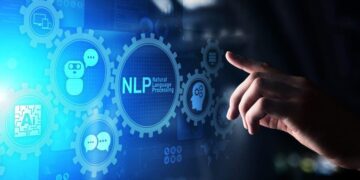Rapid technical advancements and a constantly changing cybersecurity environment are characteristics of the digital era. The focus has now shifted to a noteworthy incident called “Thejavasea.me Leaks AIO-TLP: Understanding the Controversy, Impact, and Implications.” This article explores the leak’s beginnings, the ensuing disputes, and the wider implications for privacy and digital security. Through an analysis of the incident’s many facets, we want to provide stakeholders—from regular internet users to cybersecurity experts—a thorough grasp of its importance.
Introduction: Setting the Stage
In the hyperconnected world of today, data leaks and breaches are not unusual. But when a well-known breach like the one from Thejavasea.me comes to light, it usually causes significant disruptions to the digital economy. The aforementioned event, which involves the AIO-TLP tool, has generated a great deal of discussion among the general public and the cybersecurity sector. The history of the leak, the uproar it has sparked, and the possible fallout and future ramifications for digital privacy and industry practices will all be covered in this in-depth investigation. The fundamental idea of “Thejavasea.me Leaks AIO-TLP: Understanding the Controversy, Impact, and Implications” is still quite evident: managing the difficulties presented by contemporary cybersecurity risks requires an awareness of the nuances of the subject.
The Genesis of the Leak
The origins of the Thejavasea.me leak have been a subject of intense discussion and speculation. At its core, the leak revolves around a tool known as AIO-TLP—a multifaceted software utility designed for purposes that straddle the line between legitimate cybersecurity testing and potentially nefarious activities. The name itself has generated buzz, as AIO-TLP is seen as a one-stop solution for a variety of tasks that, if misused, could compromise digital systems and networks. The leak has exposed sensitive aspects of the tool’s development process, its inner workings, and possibly even vulnerabilities within the system that hosts it.
Experts in cybersecurity have observed that these breaches often result from a combination of external attacks and internal weaknesses. In this instance, the breach seems to have been a deliberate action by people or organizations that had access to internal systems at Thejavasea.me. Some believe that the leak was intended to highlight structural problems with digital security, while others see it as a careless move that would allow for further technical exploitation. In a digital age when information is both a valuable resource and a dangerous weapon, the leak, regardless of its source, has brought up important issues about how to strike a balance between security and openness.
Controversial Aspects of AIO-TLP
At the heart of the debate surrounding the leak is the AIO-TLP tool itself. Critics argue that the tool, by its very design, blurs the ethical boundaries between legitimate security research and illegal cyber activities. Its all-in-one nature makes it a potent resource that can be utilized for both constructive vulnerability assessments and destructive cyberattacks. The ethical dilemmas posed by AIO-TLP have led to a polarized response within the cybersecurity community.
On the one hand, supporters contend that instruments such as AIO-TLP are crucial for revealing flaws in digital infrastructures. They argue that cybersecurity experts might strengthen defenses against possible attacks by testing and exposing weaknesses. According to this viewpoint, the leak acts as a spur for much-needed accountability and openness in digital security and software development procedures.
Conversely, detractors warn of the severe risks associated with making such powerful tools widely accessible. They emphasize that the leak not only compromises the integrity of Thejavasea.me’s systems but also endangers countless digital networks that could be targeted by malicious actors. The dual-use nature of AIO-TLP means that its availability in the wrong hands could lead to significant security breaches, data theft, and other forms of cybercrime. This contentious issue lies at the core of the controversy encapsulated in “Thejavasea.me Leaks AIO-TLP: Understanding the Controversy, Impact, and Implications.”
Impact on Cybersecurity and Digital Privacy
The leak’s effects have been felt across the cybersecurity community. Cybersecurity experts are immediately on high alert and rushing to evaluate the risks revealed by the leak, which is one immediate effect. To protect their networks against possible AIO-TLP exploits, organizations are reviewing their security procedures and stepping up their efforts. As a result, there has been a surge in cybersecurity audits and vulnerability assessments as businesses want to make sure their systems are secure.
Furthermore, the breach has sparked a wider discussion about digital privacy and the roles that users and developers play in preserving safe settings. The ramifications go beyond specific companies, leading legislators and regulatory agencies to take more stringent rules for data management and software development into consideration. Now, the focus is on finding a balance between securing sensitive data and encouraging innovation, a problem that is becoming more and more relevant in the wake of events like these.
The disclosure serves as a sobering reminder to the public of the risks present in our digital interactions. Data security is becoming more important as people depend more on online platforms for both personal and professional activity. A fresh emphasis on the value of cybersecurity education and awareness has resulted from the event, and users are being urged to follow best practices for safeguarding their digital identities. The breach has, in many respects, turned into a case study of the difficulties in preserving digital privacy in a globalized society.
Implications for Stakeholders and Industry Practices
Beyond the immediate repercussions, the Thejavasea.me breach has far-reaching consequences. The event highlights the need for proactive defensive strategies and ongoing security procedure updates for IT organizations and cybersecurity businesses. The disclosure of AIO-TLP’s internal operations may cause the development, distribution, and oversight of all-in-one tools to be reexamined. Stricter access rules and more thorough security assessments may be implemented as a consequence to avoid future occurrences of this kind.
The dispute emphasizes the fine line that must be drawn between creativity and accountability for developers and software engineers. In addition to technological know-how, developing sophisticated technologies like AIO-TLP calls for a solid ethical foundation. A wider industry discussion on the need of ethical standards in the creation of cybersecurity tools has been sparked by the disclosure. Dual-use technologies—those that may be used for both positive and negative purposes—may be less dangerous if such rules are followed.
The disclosure is probably going to have an impact on future digital security regulations and standards. In an effort to shield vital infrastructures against similar breaches, lawmakers and business executives may advocate for more control and responsibility in the software development process. As governments everywhere struggle with the difficulties presented by cyberthreats in a society that is becoming more and more digital, these conversations are especially pertinent.
Broader Industry Reactions and Future Outlook
The industry as a whole has been affected by the leak, and various sectors have responded in different ways. Experts in cybersecurity have seized the chance to reconsider the threat models that are in use today and create stronger defenses. Professional collaboration has increased as a result of the event, with many arguing for greater open sharing of threat information and best practices. This kind of cooperation could be essential to lessening the effects of future hacks and disclosures.
However, there is still much disagreement about the morality of using technologies like AIO-TLP. Some industry insiders are apprehensive about the potential unforeseen effects of public tool accessibility, while others see the leak as a chance to promote constructive change. As more information about the breach and its consequences becomes available, the conversation is anticipated to change. Organizations are advised to take a proactive stance in the meantime and update their security protocols often to keep up with the constantly shifting threat environment.
Going forward, the event acts as a spur for advancements in cybersecurity protection systems. As attackers improve their techniques, defenses’ tools and tactics must also advance. The next generation of cybersecurity technology breakthroughs will probably be driven by this dynamic interaction between offensive and defense. If stakeholders continue to be dedicated to learning from the incident, the lessons acquired from “Thejavasea.me Leaks AIO-TLP: Understanding the Controversy, Impact, and Implications” may eventually result in a more robust digital infrastructure.
Conclusion: Navigating a Complex Digital Landscape
In conclusion, “Thejavasea.me Leaks AIO-TLP: Understanding the Controversy, Impact, and Implications” captures the dispute and highlights the complex issues of contemporary cybersecurity. In addition to revealing weaknesses in digital systems, the AIO-TLP breach sparked a larger discussion about digital privacy, ethical responsibility, and the direction of cybersecurity technologies. One thing is certain as businesses, developers, and legislators consider the ramifications of this incident: there has never been a more delicate balance between innovation and security.
The leak from Thejavasea.me has turned into a case study of the intricate relationship between vulnerability and openness. It serves as a warning that the hazards connected with dual-use technology need to be properly addressed in this digital era of fast technological innovation. The lessons acquired from this event will be essential in creating more robust and secure digital ecosystems as the sector develops further.
In the end, the dispute presents a chance for development and progress even if it can continue to generate discussion. Stakeholders may reduce the likelihood of future breaches and create an atmosphere where safety and innovation coexist by recognizing the difficulties and cooperating to improve security procedures. Thejavasea.me Leaks AIO-TLP is a landmark event that serves as a reminder that ethical responsibility and attentiveness are crucial in the pursuit of advancement.


































I am extremely impressed with your writing talents as smartly as with the layout in your weblog. Is that this a paid theme or did you customize it your self? Either way stay up the excellent high quality writing, it’s rare to peer a great blog like this one nowadays!
I am really impressed together with your writing talents
and also with the structure to your blog. Is that this a paid
topic or did you modify it your self? Either way stay up the excellent
quality writing, it’s uncommon to peer a nice blog like this one nowadays.
Blaze AI!